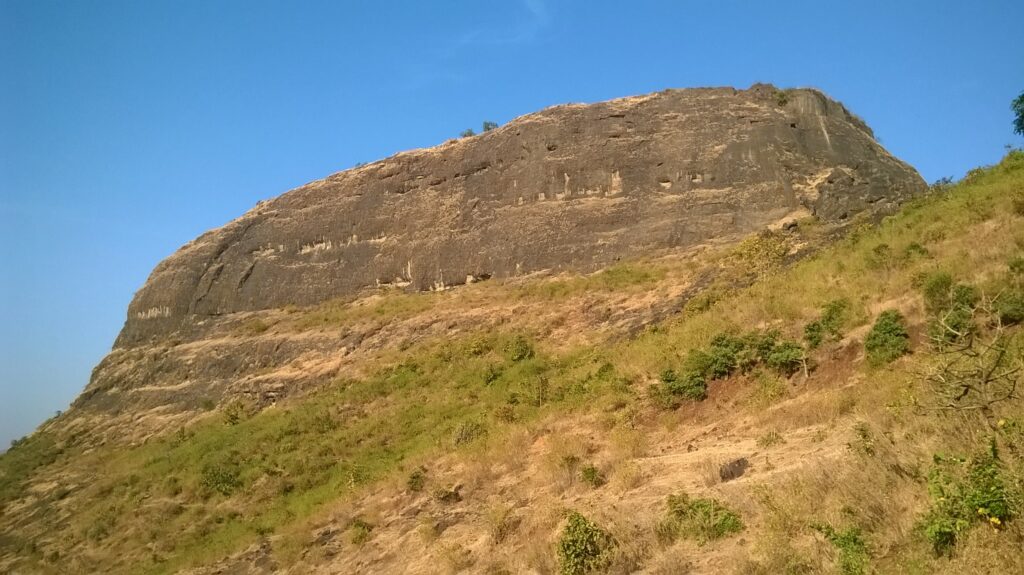Junnar tehsil is one of the tehsil of india, which is having 360 leni’s in it. Basically these
leni’ are of Hindus, baudhas and jains.
- Amba Ambika Leni (Khore Vasti, Junnar)
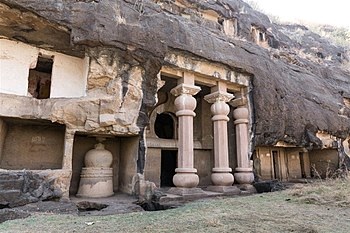
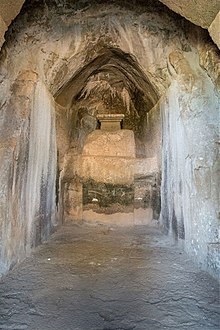
The Amba-Ambika group of caves. Near the south-east end of the hill is the second group, consisting of an unfinished Chaitya-cave and a number of ruined cells and viharas ( 19.1858°N 73.8843°E ). This Chaitya-cave is somewhat on the plan of the Bedsa one, that is, it has two octagonal columns in front, supporting the entablature above the great window. These columns are of the style occurring at the Ganesa Lena , with water-pot bases and capitals; but otherwise this cave is quite unfinished: the aisles have not been commenced; the capital of the dagoba is roughly blocked out, and portions of a square mass of rock from which to hew out the dome of it; but a great fault in the rock at the back of the cave seems to have stopped further operations. The Chaitya hall. Excavation was halted due to a major fault in the rock, that fills the cave with water in the rainy season. The front is quite rough, but, if finished, would probably have been similar to the Bedsa Chaitya cave. It is almost covered with inscriptions, but from their positions and the roughness of the surfaces on which they are carved, it may naturally be inferred that they are only the work of visitors, perhaps long after the work was relinquished. Few of them can be made out with any
certainty. The cave faces north by east, and the floor is much filled up with mud. At the east side of it is a cell, also deep in earth, in which is a dagoba, the chhatri or umbrella carved on the roof, but the staff has been broken, evidently with a view to convert it into the usual Saiva emblem.
Jainism Cells
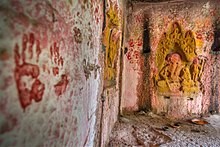
Paintings of Tirthankara in a cell of the second level. There are portions of other cells, and a fragment of an inscription beside some modern steps leading up to five cells above. The two at the west end are converted into one by cutting away the partition, and on the walls are three defaced figures perhaps of Jain figures . This is dedicated to the goddess Ambika also the sasanadevi or patron goddess of the 23rd Tirthankara Neminatha . Here Brahmans worship the mutilated image of Jain as a Shiva goddess. In the outer wall of another of these cells there have been a standing ( Kayotsarga ) and a sitting
figure of Tirthankara , but these are now almost obliterated.
Information available on YouTube
https://www.youtube.com/watch?v=FsZXDJyR-O0
https://www.youtube.com/watch?v=dbqVJeG5QK8
https://www.youtube.com/watch?v=imwH4PxPbp8
https://www.youtube.com/watch?v=okEcXiF68TQ
- Tulja Bhawani Leni Padali
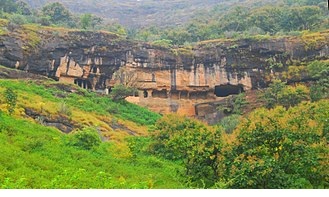
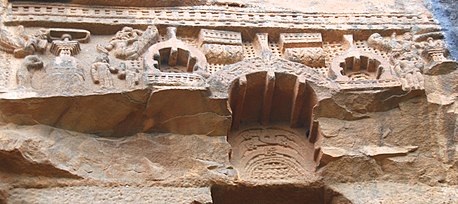
Tulja Caves (Tulja Lena) are located beyond the Shivneri hill, about 4km to the west
of Junnar , India . [1] Other caves surrounding the city of Junnar are: Manmodi Caves , Shivneri Caves and Lenyadri caves .
The cave has circular Chaitya hall surrounded by twelve octagonal pillars around Stupa . These caves are one of the earliest caves of Junnar , excavated around 50 B.C. This Buddhist cave group consist of 11 cave. Cave No 4 is used as a temple of goddess Tulja Devi
Description
The Tulja Lena caves lie in a hill about a mile and a half or two miles north-west from Junnar , beyond the north end of Shivaneri hill. They owe their name to a shrine of Tulja Devi , a form of Bhavani , the consort of Shiva (see Tulja Bhavani Temple ). The caves run along the face of the cliff nearly from south-east to north-west, facing about south- west, but all the façades have fallen away. They consist of a number of cells and two small viharas , with a Chaitya cave of a form quite unique. It is circular in plan, 25 feet 6 inches across, with a dagoba in the centre, 8 feet 2 inches in diameter, surrounded by twelve plain octagonal shafts 11 feet in height, supporting a dome over the dagoba. The surrounding aisle is
roofed by a half arch rising from the wall to the upper side of an architrave 7 or 8 inches deep over the pillars. Tulja Caves from a distance. The dagoba is perfectly plain, but its capital has been hewn off to convert it into a huge linga of Shiva , and even the dome is much hacked into, while some of the pillars have been notched and others broken.
In front of this cave and the one on each side of it is a platform built by the modern devotees of Tulja Devi. Over the front of one of the cells to the north-east of this are left some Chaitya-window ornamentation, a larger one over where the door has been, the inner arch of which is filled with knotted ribbons etc…, similar to what is over the Chaitya-cave door at the Nasik Caves , while the front of the arch is carved with flowers. On each side of this is a smaller arch; and farther to the left is a dagoba in half relief with the umbrella or chhatri over it, on each side a Gandharva or Kinnara above, and a male figure below, that to the right attended by a female, but all of them weatherworn. Over all is a projecting frieze carved on front with the “Buddhist rail pattern”. Remains of the circular Chaitya. Next to these are two more plain fronts, and then two with Chaitya-window heads over where the
doors have been, and smaller ones between, and the “rail ornament” and quadrantal carved roll supported by slender brackets in entire relief, as at the Bhaja Caves .
Information available on YouTube
https://www.youtube.com/watch?v=HOzXgDANR9Y
https://www.youtube.com/watch?v=N3bt_8IL8ag
- Naneghat Leni – Ghatghar
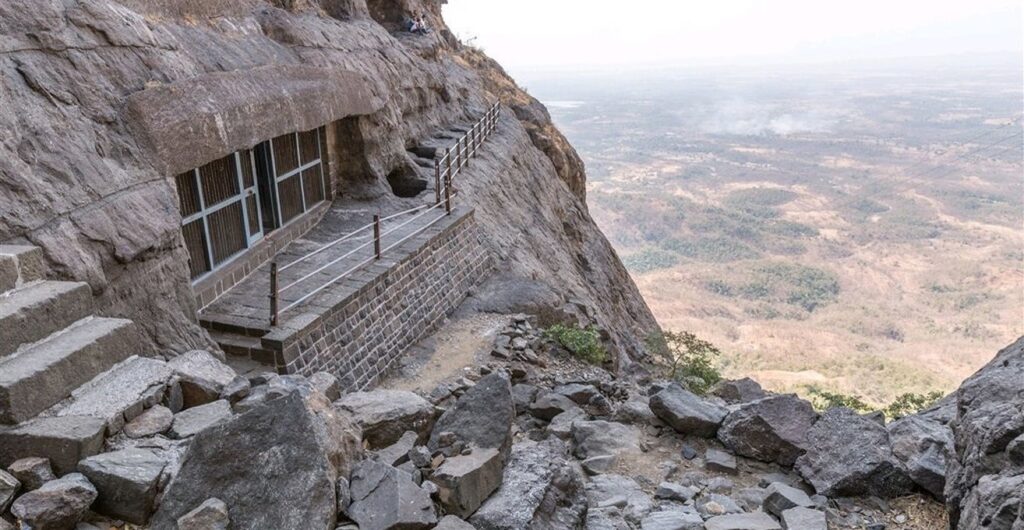
Information available on YouTube
https://www.youtube.com/watch?v=JC2ZUV8yzZs
https://www.youtube.com/watch?v=UsIxLqhDrC8
- Bhut Leni – Junnar
Information available on YouTube
https://www.youtube.com/watch?v=BbX8bymxFBw
https://www.youtube.com/watch?v=ID1E0itzUmA
5. Lenyadri Vinayak Leni Lenyadri / Suleman Leni Lenyadri
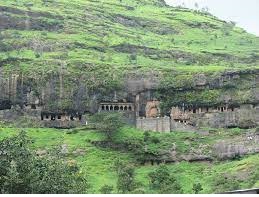
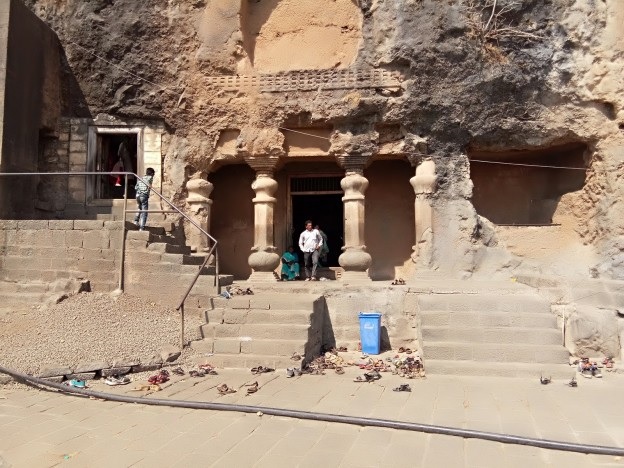
Lenyadri Caves represents about 30 Buddhist rock-cut caves, which are situated in the district of Pune in the state of Maharashtra at Junnar. 26 of the total of 30 caves are serially numbered from the east to the west. The caves numbered 6-14 are the chapels, which are known as chaitya-grihas and the rest of the caves are the dwelling places for the monks and are known as viharas. These viharas are crafted in the form of cells. There are a couple of water cisterns carved out of rock and two have inscriptions. The word Lenyadri has been derived from “Lena”, which means cave in Marathi and “Adri” which means stone-resistant in Sanskrit.The layout of the caves are similar and generally comprise of 1-2 sides and have long benches, two in number for the use of the occupants. The Cave 7 houses the popular Hindu Temple dedicated to Ganesha God. It is one of the shrines in the set of eight noteworthy religious places known as Ashtavinayak in the western part of Maharashtra. The caves are associated to the Hinayana sect of the Buddhist religion as well.
Information available on YouTube
https://www.youtube.com/watch?v=fDKAFEA1bl8
https://www.youtube.com/watch?v=7SaM6WBJgzk
https://www.youtube.com/watch?v=m_WUNMOhZcY
6. Manmodi Caves
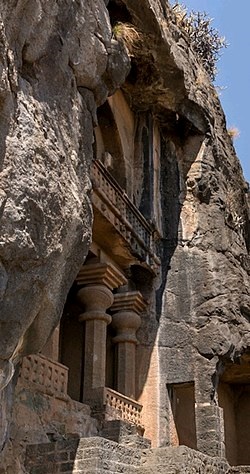
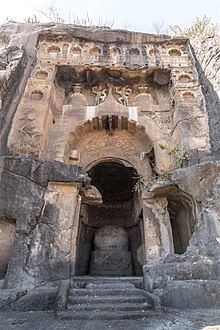
The Manmodi Caves are a complex of a rock-cut caves about 3 km to the south of the city
of Junnar in India . [1] Other caves surrounding the city of Junnar are: Tulja Caves , Shivneri.The Manmodi Caves are a complex of a rock-cut caves about 3 km to the south of the city of Junnar in India.Other caves surrounding the city of Junnar are: Tulja caves, Shivneri Caves and Lenyadri caves. It is thought that the caves were positioned on natural trade routes, formed by passes leading from the coast to the basaltic plateau of the Western Ghats.[1] One of the caves in Manmodi has an epigraph mentioning the Western trap Nahapana bearing the title of Mahakshatrapa (Great Satrap)
Description
The Manmodi hill lies south from Junnar, at a distance of about a 3 km. It contains three groups of excavations, the second of which is nearest to the road, and the first a considerable way along the north-west face of the hill, near where it turns to the north-east. The caves are classified in three groups, also having specific names:
- Bhutalinga (भूत लेणी) group, with an inscription by a Yavana donor.
- Amba-Ambika (अंबा-अंबिका) group
- Bhimasankar (भीमाशंकर) group, southeast of Manmodi hill, with the inscription of Ayama, minister of Nahapana in 124 CE.
7. Shiwai Leni Shivneri Junnar
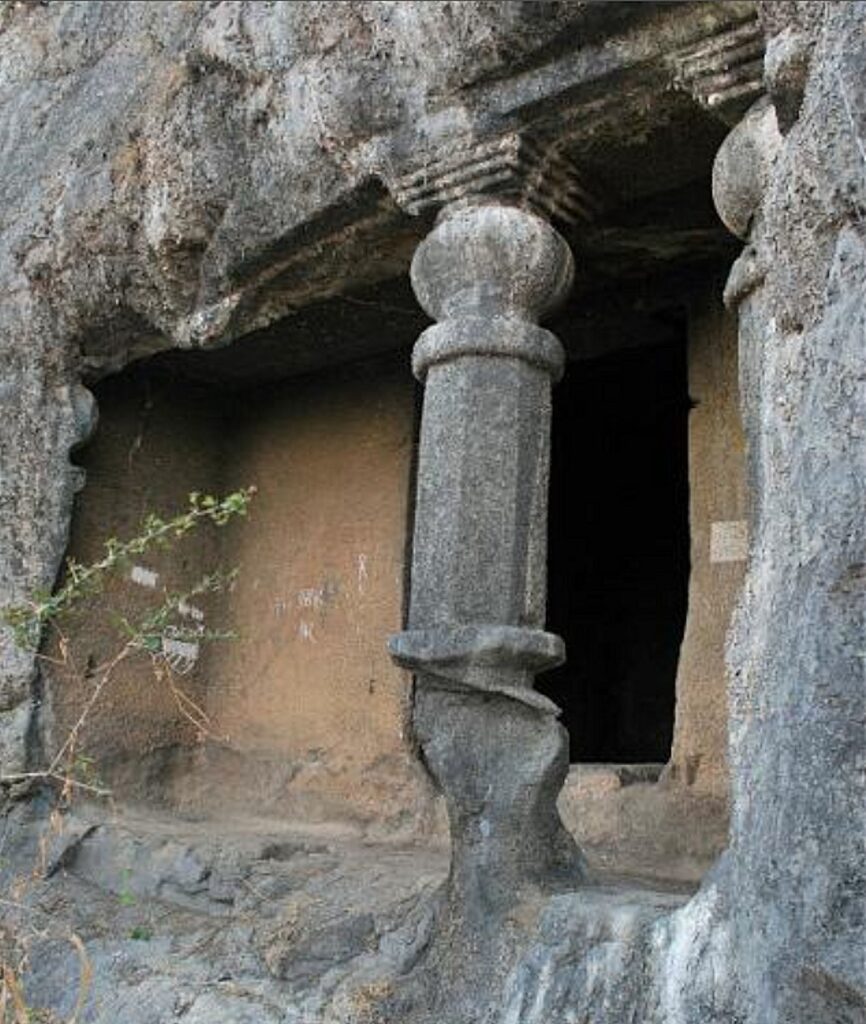
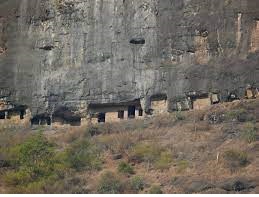
Information available on YouTube
https://www.youtube.com/watch?v=QWwl7bogZH4
https://www.youtube.com/watch?v=GProaHecmkg
https://www.youtube.com/watch?v=71tsSAAvYmg
8. Hadsar Leni- Hadsar Gaon
